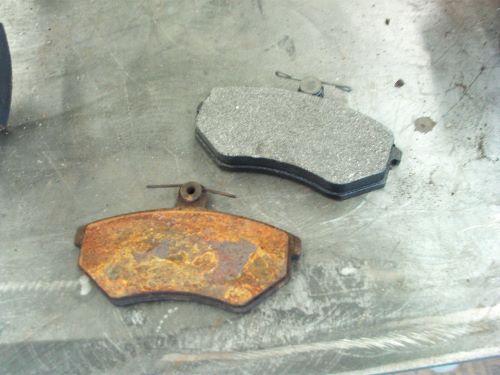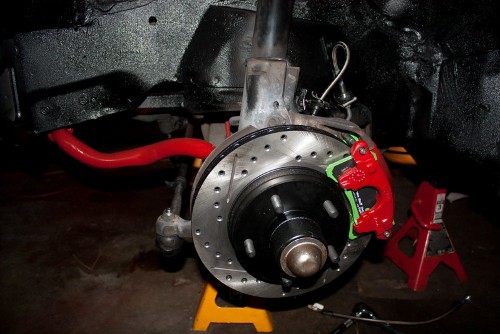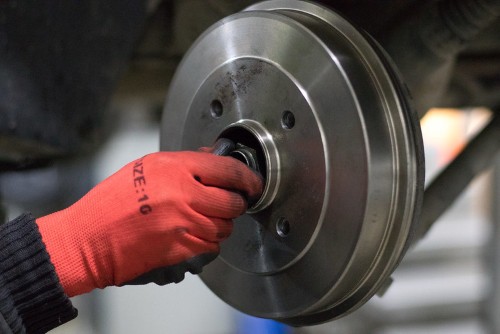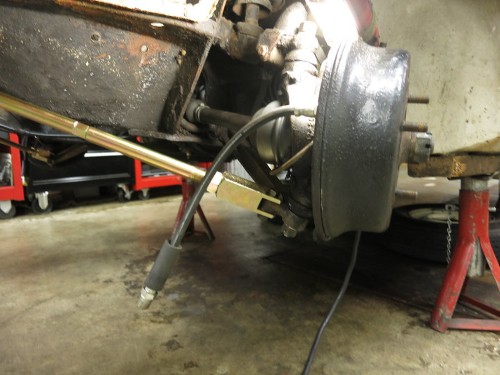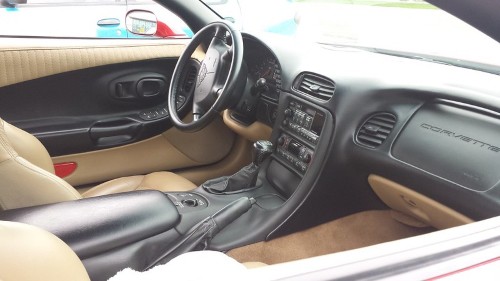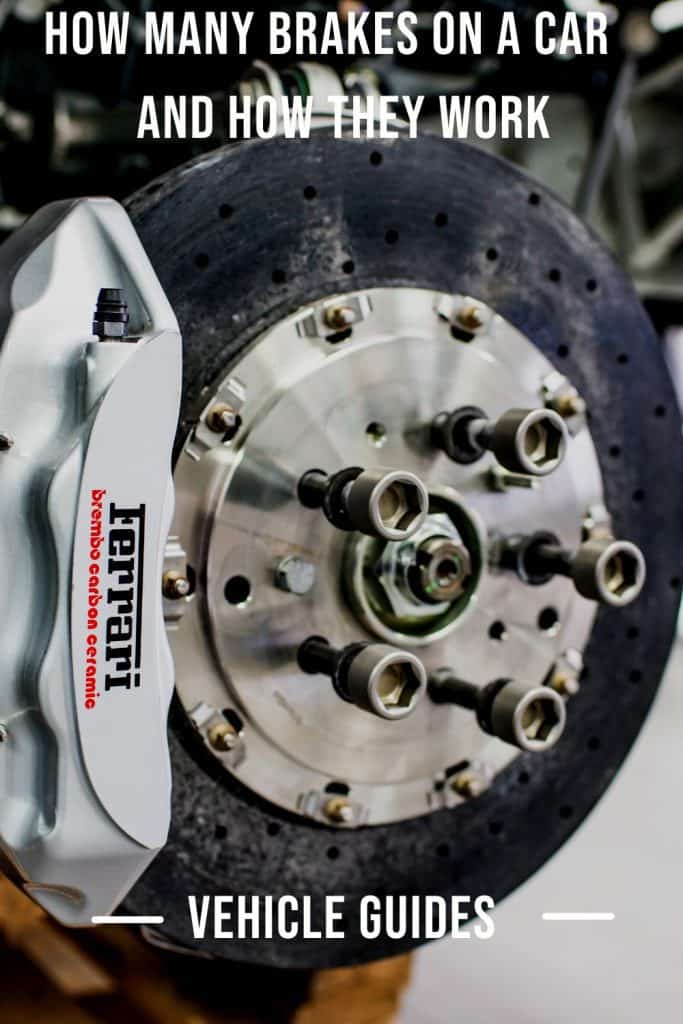What is the only thing more important than making a car move? Getting it to stop. Brakes are an essential part to any vehicle and need to be relied on even more than the engine itself. If the engine or battery don’t work you’re not going anywhere. If the brakes don’t work, it may be your last time going anywhere. Since brakes are such an important aspect to drivability and safety there is going to be more than just one, but how many brakes are on a car? Even though every car model is different, nearly all modern day cars are equipped with several brakes to maximize stopping power and provide emergency stopping. It may be easy to forget about such an integral part of your car since you are not exactly seeing it, but they are essential and do need to be monitored. Like other parts and components of your car, they need to be replaced every so often for peak performance.
Breaking Down the Brakes
In comparison to other components of your car, brakes are not as complex as you would think. With a number of moving parts, they are designed to be rugged, reliable, and effective in order to stop your car as fast as possible. There are a few different types of brakes including disk, drum, and emergency but they all generally have the same parts in order to function.
Brake Rotors
Rotors can differ in design and materials depending on the intensity of their use but will always be that classic disc shape fastened to the axel.
Brake assembly by mtneer_man / CC BY 2.0
These rotors have holes to help with the removal of water in wet conditions. They also have slots, the curved grooves, that will help to disperse the heat of intense breaking.
Standard rotors will have flat planes, which can still be highly effective, but are used in low to moderately powered cars, while high performance cars typically have holes or slots in their rotors to compensate for additional heat from friction. These metal discs rotate with your wheel and are clamped between brake pads in order to slow down the rotation of the wheel and in turn, your car’s overall speed.
Rotors come available in different materials, giving the driver the certain benefits they may require for their specific purposes. Because of the consistent abuse of the rotors they need to be tough and durable. Overuse of a cheap material can lead to warping or deterioration which can cause that classic squeaking noise and weaker braking power. Cast iron being the standard material used, is effective at getting the job done and can last for a fair amount of miles, but is the heaviest of the options. On the other end of the spectrum we have ceramic rotors which can be found in most super cars. They are the most effective and can handle the highest heat capacity, but not surprisingly are the most expensive of the options. Regardless of what type of rotor your car uses it is important to monitor the wear of the material and replace when recommended. It may be easier to just turn up the volume and ignore the squeaking but it won’t be as easy to ignore the tree you just wrapped your car around.
Brake Pads
Not the type you put on before a football game, these pads are used for gripping your rotors. They take more punishment than a tackle and are just as important, if not more, for your safety. Knowing that the rotor is attached to your axle and rotate with the wheel, the brake pads are attached separately and are used to grab onto the rotors. The direct contact between the pads and the rotor is the force that is stopping the car. The amount of energy being created from the friction causes the materials to heat up and tarnish over miles of use. We mentioned that rotors need to be replaced if worn down, but realistically the brake pads will have to be replaced more often then the rotors.
New vs. Old Brake Pads by Dave Linger / CC BY 2.0
A new brake pad will have an inch or so of usable material giving it thousands of miles of braking but after extended use and exposure to the elements can begin to wear and break them down.
Like the rotors, brake pads are available in several types of materials for different levels of performance. Asbesto was the top choice in the early 80s but has since then been replaced for obvious reasons. If you were a mechanic back in the day dealing with these types of brakes, keep an eye out for commercials that will get you your compensation. Moving to modern day materials, they are now available in organic materials such as carbon, rubber, or fiberglass. Or if you are looking to replace your brake pads on your Ferrari you can match your ceramic rotors with a top of the line ceramic brake pads.
Brake Caliper
So we have the rotors, the pads, and now the calipers. Any one of these without the other renders the entire braking system useless. The calipers are the essential part that actually houses the brake pads. They are a vise-like piece that holds the brake pads on both sides of the rotors, and when the brakes are applied from the driver, presses the pads together to grab onto the rotor.
IROC Brake Upgrade by Nick Ares / CC BY 2.0
Gear-heads love to upgrade their cars to make them faster and more powerful. But if you are going to upgrade your engine it is a good idea to upgrade your braking system as well. These upgraded rotors, pads, and calipers will give this car significantly better stopping power. The silver disc is the rotor, the red clamp is the caliper and the green slab is the pad itself.
Calipers work with the help of hydraulic pistons and brake fluid to close firmly on the rotors. When the driver presses down on a brake pedal the brake fluid is pushed through a series of hoses to reach the calipers and provide a pushing force to the pistons, closing the pads onto the rotor.
Brake Drum
This is a component of a braking system used as the braking surface on the wheel side, meaning it is attached to the wheel and rotates as such. Drums can be made out of cast iron but for weight and heat purposes can also be made out of aluminum. The drum is the outermost part and houses the remainder of the braking components inside. It is only used for the drum brake system and is not on disc brakes.
Car mechanic putting a bolt on a drum brake by Ivan Radic / CC BY 2.0
The entirety of the silver disc-like part with the four screw holes is the drum itself. Drums can be a bit heavier than its rotor counterpart but still are effective at slowing and stopping a vehicle.
Brake Lines
As we mentioned before, calipers work off of the hydraulic pressure of brake fluid. This brake fluid is provided to the caliper via the brake lines which are a series of hoses that connect from the master cylinder to the calipers themselves. Standard brake lines are made out of rubber and are fairly resistant but can have issues. Being that they are only rubber, brake lines are susceptible to punctures or deterioration which can lead to serious issues, but any mechanic servicing your car should inspect your whole brake system for safety. Just like any other part of your car, brake lines can be upgraded too.
IMG_1855 by SloopRiggedSkiff / CC BY 2.0
Drum brakes work in the same manner as calipers and also need brake fluid in order to engage the hydraulic pistons. Each wheel will have its own brake line running to it to provide the brake fluid. The hose hanging off the left side is a component of the brake lines.
How do Car Brakes Work?
Knowing the main components of the braking system, you can begin to understand just how they work. From pressing your foot on the brake to the car slowing down there is a fair amount going on very quickly, so let’s review. When you initially step on the brake pedal the first thing engaged is a master cylinder. This is a component is comprised of a reservoir to hold the brake fluid along with pistons to apply pressure and allow for the flow of the fluid. A master cylinder may also be referred to as a vacuum booster. The reason for this name is because of the function it plays on boosting the force generated by your foot. The vacuum booster multiplies the amount of pressure generated by your foot so the brake fluid can move faster to the calipers.
With the brake pedal pushed and the master cylinder engaged, brake fluid is then pushed to each of the brakes on your car via the brake lines. Modern day cars will be equipped with four active brakes, one for each wheel. Having four active brakes not only allows for an additional safety measure if one were to fail, but it also helps to create maximum stopping power. The brake lines running to each wheel are already filled with brake fluid so when the master cylinder is engaged it is pushing that fluid into the calipers. This helps to increase the reaction time and accuracy of the pressure required.
Once the brake fluid is engaged in the caliper or drum brake, the hydraulic pistons exert force to the brake pads to come in contact with the rotor or drum which is what actually decelerates the car. Essentially, everytime you press the brake pedal you are creating friction on the rotor or drum to stop the car.
Give Me a Break, There are Different Kinds of Brakes?
Cars can come equipped with just more than one type of brake and sometimes have the front brakes using a different set than the rear. Higher performance vehicles may use all four of the same brakes depending on the amount of stopping power needed.
Disc Brakes
Disc brakes are a common system used in most modern day cars. They are most effective when used on the front two tires and provide more stopping power than other systems. The disc brake consists of two brake pads mounted in a calliper that sit on opposite sides of the rotor. Pressure from brake fluid closes the two brake pads together clamping onto the rotor. This type of brake is preferred because of its efficiency in stopping power along with its ability to effectively dissipate the generated heat.
Rear Disc Brakes by Ryan Frost / CC BY 2.0
Because disc brakes have additional benefits to drum brakes, high performance vehicles will come standard with disc brakes for each wheel.
If disc brakes are so much better why doesn’t every car use four of them? The easy answer is, cost. Disc brakes have a higher price tag than a drum brake and are overall not as cost effective. Standard cars on the road are more than suffice with the use of disc and drum brakes so it could be overkill to have that much stopping power. Rear drum brakes are adequate for the average car so it wouldn’t exactly make sense to increase the price of a cheaper car for unnecessary disc brakes. With that being said, the use of four disc brakes is becoming increasingly popular in recent years so they are more available in the average car now.
Cars with Four Disc Brakes
- 2021 bmw M3
- 2021 Audi S3
- 2021 Volkswagen Golf R
- 2021 Porsche Cayenne GTS
- 2021 Honda Civic Type R
- 2021 Dodge Challenger
An easy way to tell what type of brakes are being used is to peak at the wheel. If you have rims instead of a hubcap you can probably see what type of brake is being used.
Porsche 911 997 GT3 RS by The Car Spy / CC BY 2.0
Looking through the rims you can spot the callipers. For aesthetic purposes callipers can be painted different colors to match your car’s color and style. If you are able to see the calliper you can determine it is indeed a disc brake. This Porsche has yellow callipers on both the front and rear wheel so we can determine it is using disc brakes on the rear wheels as well.
Drum Brakes
Drum brakes, in principle, use the same technique as disc brakes. The main difference is the components being used and how they function. Drum brakes have its pads located inside the metal drum. They push a brake shoe onto the inner surface of the drum which in turn pushes the brake lining into the drum itself. This creates the friction to slow down the rotation of the wheel. Similar to disc brakes, when the brake pedal is pressed by the driver the master cylinder pushes brake fluid to the rear tires into a wheel cylinder which provides the pressure to the brake shoes.
Understanding how drum brakes function you can begin to realize just why they do not dissipate heat as well. The entire system is contained within the back plate and drum so there is not much space for ventilation. If overused, excessive heating can cause the drum to distort and brake fluid to vaporise, amongst other potential issues. If used as intended, drum brakes will usually last longer than a disc brake and can be easier to maintain, but can be a bit of a pain to replace.
Cars that Use Drum Brakes
Depending on the trim or model being offered some of the listed cars can come available with four disc brakes rather than drum brakes for the rear wheels. Not only can sedans and SUVs use drum brakes but trucks may also opt to use them as well.
- 2016 Toyota Tacoma
- 2016 Scion iA Sedan
- 2012 Honda Civic
- 2021 Volkswagen ID.4
- 2019 Ford Fiesta
- 2020 Toyota Yaris
Emergency Brake
How many brakes are on a car? The emergency brake, also known as a parking brake, is not actually an additional brake for your vehicle. Instead, it is a separate system that acts to engage the rear brakes without the use of brake fluid. Emergency brakes can be initiated differently depending on the vehicle but the four most common types are: pedal, push button, stick lever, or center level. That’s probably not a clutch pedal or shifter you are looking at but rather a device to engage your emergency brake.
Old/new Chevrolet Corvette interior by dave_7 / CC BY 2.0
If you are one of the few drivers left on the road who still use a manual transmission, you are definitely familiar with the parking brake (located on the right side of the center console.) It is not mandatory to leave a manual car in gear while parking so the only other way to keep it from rolling away is by applying the parking brake. However, we do recommend leaving it in first AND applying the parking brake.
Emergency brakes, as the name implies, were designed in case of emergencies if brake fluid pressure was lost. Since brake hoses are susceptible to damage this additional braking system was put in place as a way to stop a car by mechanical means. The center lever, pedal, etc. are attached to the rear brakes with cables rather than hoses and fluids. The cable can attach to either the drum or disc brake and will apply the pressure necessary for the brake pad or lining to create the contact needed to stop the wheel from turning. Since technology has increased and parts are becoming more reliable, the emergency brake has become increasingly popular as just a parking brake. It adds an additional layer of assurance and safety to engage your parking brake when on hill or steep incline. Applying the parking brake will stop your rear tires from rotating and will help your car from rolling down a hill.
Conclusion
So, how many brakes are on a car? The answer is four. Each wheel will have its own brake to maximize a cars stopping power. Older or lower performance cars generally will use disc brakes for the front two tires and drum brakes for the two rear tires. Even though drum brakes may not be as efficient as disc brakes they are still safe and adequate for their purpose. Newer and higher performance cars use four disc brakes on each tire to stop faster from higher speeds. Many cars for beginners or new drivers will also utilize four disc brakes for the additional stopping power.
Brakes are probably the most important system of your car so it is important to keep up on the maintenance and status of the individual parts. It should be standard protocol for mechanics, but make sure they inspect your brake pads, rotors, lines, calipers, fluid, lining, shoes, and all of the other smaller parts when in for service. If you are hearing squeaking, squealing, or any other unusual noise when applying the brakes, it is a good sign something needs to be replaced. If you notice lag time in between pressing the pedal and the brakes actually being applied, another good sign something needs replacing. If you are an RV enthusiast, brakes are just as important, if not more, considering the amount of weight being moved.
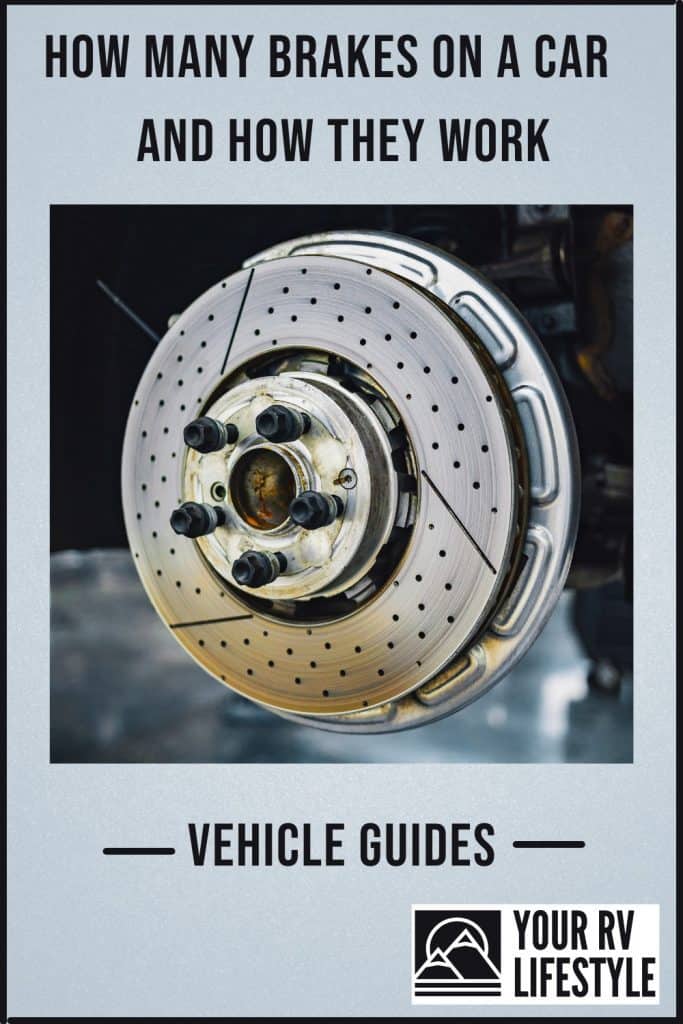

Jason is a car enthusiast who spends his time writing for Your RV Lifestyle and enjoying the great outdoors in his RV. His greatest pride and joys are his Atlas Airstream motorhome, Volkswagen Golf R and GSX-R750 motorcycle. Although he lives in New Jersey, he finds plenty of farm and back roads to cruise. Jason isn’t afraid to get his hands dirty and is familiar with working on his car and bike to keep them and peak performance.

